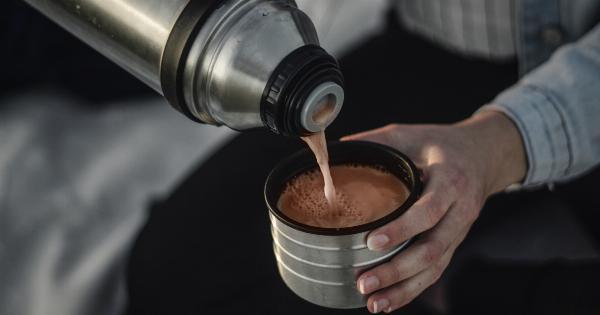Energy drinks are popular beverages known for their ability to provide an instant boost of energy and help improve focus and alertness.
While there are a plethora of energy drinks available in the market, making your own can be a fun and cost-effective option. In this beginner’s guide, we will explore the step-by-step process of creating your very own energy drink at home.
Understanding the Basics
Before diving into the world of DIY energy drinks, it is important to understand the basic components that make up these beverages. While the specific ingredients may vary, the key elements typically include:.
- Caffeine: This stimulant is the primary ingredient responsible for the energy boost.
- Sugar: Provides the necessary sweetness and acts as a quick source of energy.
- Taurine: An amino acid that may enhance exercise performance and reduce fatigue.
- B-Vitamins: Play a vital role in converting food into energy and supporting overall health.
- Flavorings: Various natural or artificial flavors are added to enhance taste.
Gathering the Ingredients
Once you have a good understanding of the basic components, it’s time to gather the ingredients you’ll need for your homemade energy drink. Here are the essential items:.
- Water: The base of your energy drink.
- Caffeine Source: This can be in the form of powdered caffeine, coffee, or tea.
- Sugar or Sweetener: Choose your preferred sweetener, such as sugar, honey, or stevia.
- Taurine Supplement: Available in capsule or powdered form at health stores.
- B-Vitamin Complex: Look for a reputable brand that contains essential B-vitamins.
- Flavoring Agents: Extracts, fruit juices, or energy drink flavoring concentrates.
- Optional Additions: You can experiment with ingredients like electrolytes or herbal extracts.
Mixing Your Energy Drink
Now that you have all the necessary ingredients, it’s time to mix them together to create your own energy drink. Follow these simple steps:.
- Start by heating a cup of water in a saucepan. Avoid boiling.
- Add your preferred caffeine source to the heated water and stir until dissolved.
- Next, add the desired amount of sugar or sweetener. Adjust according to taste.
- Open the taurine supplement capsule (if using) and empty it into the mixture.
- Measure out and add the B-vitamin complex as per the recommended dosage.
- Add a few drops of your chosen flavoring agent to enhance the taste.
- Stir the mixture well to ensure all the ingredients are fully blended.
Tasting and Adjustments
Once you’ve mixed all the ingredients, it’s time to taste your homemade energy drink. Take a small sip and assess the flavor and potency. If necessary, make adjustments according to your preferences:.
- If the drink tastes too bitter or strong, add more water or sweetener to balance it out.
- If you desire a stronger caffeine kick, carefully add a small amount of powdered caffeine.
- For a fruitier taste, consider adding more drops of your chosen flavoring agent.
Remember, experimenting with different ingredient ratios and flavors is part of the fun of making your own energy drinks. Don’t be afraid to get creative and personalize your concoction to suit your tastes.
Serving and Storage
Once you’re satisfied with the taste, it’s time to serve and store your homemade energy drink:.
- Pour the drink into a glass or a bottle of your choice.
- Consider adding ice cubes for a refreshing and chilled experience.
- If you don’t consume the entire batch immediately, store it in a refrigerator.
- Remember to shake the container before serving as some ingredients may settle.
It is important to note that homemade energy drinks may not have the same consistency or taste as commercial ones. Also, be mindful of the caffeine content and consume in moderation.
Safety Precautions
When making your own energy drinks, it’s crucial to follow some safety precautions:.
- Always read and follow the instructions and recommended dosages for each ingredient.
- Avoid exceeding the recommended caffeine intake for adults, which is around 400mg per day.
- Be cautious if you have any underlying health conditions, and consult with a healthcare professional before consuming homemade energy drinks.
- Avoid giving homemade energy drinks to children, pregnant women, or individuals sensitive to caffeine.
Keeping these safety measures in mind will help ensure an enjoyable and safe energy drink-making experience.
Conclusion
Making your own energy drinks can be a rewarding and cost-effective alternative to store-bought options.
By understanding the basic components and following the step-by-step process outlined in this beginner’s guide, you can create customized energy drinks that cater to your taste preferences and energy needs. Remember to experiment, but also remain mindful of safety guidelines and moderation. So go ahead, get creative, and enjoy the boost of energy from your very own homemade concoction!.



























